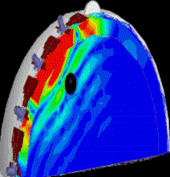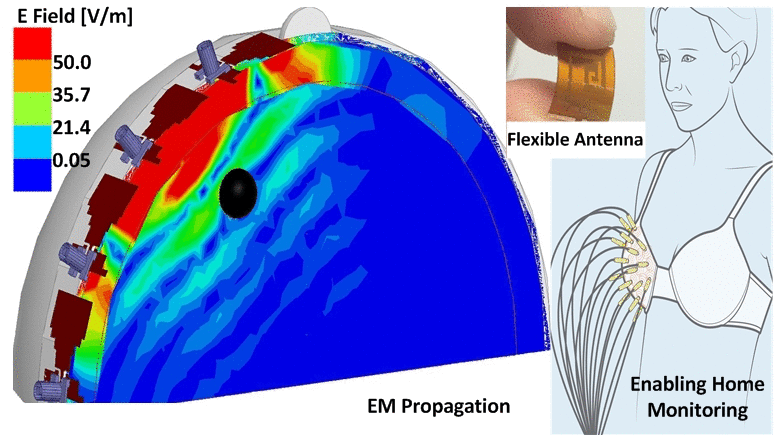H. Bahramiabarghouei, E. Porter, A. Santorelli, B. Gosselin, M. Popović, and L. A. Rusch, Laval University & McGill University, Volume 62, Issue 10, Page 2516-2525
Radar based microwave imaging (MWI) has been widely studied for breast cancer detection. The dielectric property differences of tissues must be monitored over a wide frequency band for this application. We target a clinical prototype with a wearable patient interface for microwave breast cancer detection. The long-term goal is a low-cost, low-exposure, portable, breast cancer screening device for wide deployment.
The radar system for microwave breast cancer detection and monitoring uses multistatic time-domain pulsed radar. Sixteen flexible antennas are embedded into a bra and form the core of a multi-static imaging system. The previous system required the patient to lie prone on a table where a rigid, cup-like holder accommodated the breast to be imaged. Our prototype is wearable and has improved measurement consistency as the flexible antenna array conforms to breast shape and does not require an immersion medium to eliminate air gaps. The proposed system is significantly more cost-effective and has a smaller footprint.
Using a high-frequency electromagnetic structure simulator (HFSS), we design single- and dual-polarization antennas in a frequency range of 2–4 GHz, to be in contact with biological breast tissues. We developed two different flexible conformal 4×4 ultra-wideband antenna arrays, in a format similar to that of a bra. By using a reflector for the arrays, the penetration of the propagated electromagnetic waves from the antennas into the breast can be improved by factors of 3.3 and 2.6, respectively. To the best of our knowledge, a flexible antenna array for breast cancer screening has not been presented in the literature to date.
http://www.compem.ece.mcgill.ca/breast-cancer-detection/index.html


